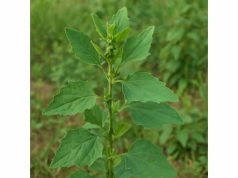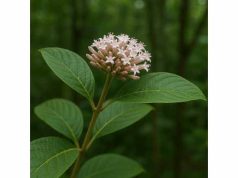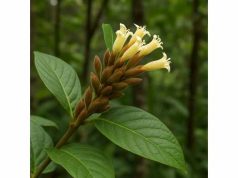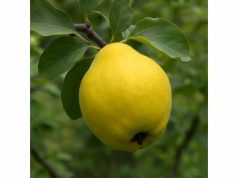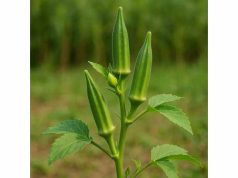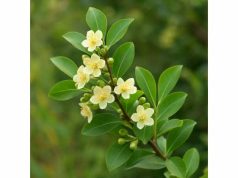
Quiabos are more than just a popular culinary vegetable—they are a nutritional powerhouse with a long history of use in traditional medicine. Revered for their antioxidant, anti-inflammatory, and digestive properties, these versatile green seed pods are also known to support cardiovascular health, regulate blood sugar levels, and boost immunity. Rich in vitamins, minerals, fibers, and bioactive compounds like flavonoids, polyphenols, and mucilaginous polysaccharides, quiabos offer both culinary delight and therapeutic benefits. Their gentle flavor and unique texture make them ideal for a variety of dishes, while their medicinal properties have been harnessed for centuries in natural healing practices.
Table of Contents
- Botanical Profile and Identification
- Phytochemical Composition and Active Ingredients
- Health Benefits and Medicinal Properties
- Practical Uses and Safety Guidelines
- Scientific Research and Key Findings
- Frequently Asked Questions
Botanical Profile and Identification
Quiabos, commonly known as okra, are a warm-season annual vegetable native to Africa and widely cultivated in tropical and subtropical regions around the world. They belong to the Malvaceae family and are recognized by their elongated, green seed pods that encase numerous round, mucilaginous seeds. The plant itself is characterized by tall, bushy stems that can reach heights of up to 2 meters, with large, heart-shaped leaves that provide ample shade for the developing fruit.
Morphological Characteristics
- Stem and Leaves:
Quiabos feature erect stems that are typically green to reddish in hue. The leaves are large, broadly ovate, and exhibit a slightly serrated margin with a glossy surface. Their vibrant green color is indicative of high chlorophyll content, essential for the plant’s photosynthetic efficiency. - Flowers:
The flowers of the quiabo plant are striking, with a trumpet-shaped, five-petaled structure in hues ranging from pale yellow to deep purple. These fragrant blossoms bloom profusely during the growing season, attracting a variety of pollinators, including bees and butterflies, which aid in effective cross-pollination. - Fruit (Seed Pods):
The most distinctive feature of quiabos is their fruit—the slender, tapering pods that can range from 10 to 20 centimeters in length. When immature, the pods have a crunchy texture and a subtle grassy aroma. As they mature, they become softer and more mucilaginous, a property attributed to their high soluble fiber content.
Growth Conditions and Natural Habitat
Quiabos thrive in hot, humid climates with well-drained, sandy loam soils. They require full sun exposure for optimal growth and are highly tolerant of heat. However, they are somewhat sensitive to frost, which can damage the tender tissues of the plant. In their natural habitat, quiabos are often found in tropical riverbanks, fields, and gardens where the soil is rich in organic matter. The plant’s deep root system allows it to withstand periods of drought by efficiently absorbing moisture from the soil.
Cultivation and Sustainability
Modern agricultural practices focus on sustainable cultivation methods to preserve the genetic integrity and nutritional quality of quiabos. Organic farming techniques—such as crop rotation, minimal pesticide use, and the application of natural fertilizers—are widely practiced to enhance soil fertility and reduce environmental impact. Research in agronomy has also identified various cultivars of quiabos that exhibit enhanced resistance to pests and diseases, thereby ensuring a reliable yield for both small-scale farmers and commercial growers.
Historical and Cultural Significance
Quiabos have a rich cultural history that spans continents. In Africa, they have been cultivated for millennia and are a staple ingredient in numerous traditional dishes. Their introduction to the Americas, particularly in the Southern United States and Brazil, transformed regional cuisines and led to innovative culinary techniques. In many cultures, quiabos are celebrated not only for their unique taste and texture but also for their purported medicinal properties. Folk remedies have long employed quiabo extracts to alleviate respiratory issues, ease digestive discomfort, and support overall vitality.
The botanical characterization of quiabos is essential for their correct identification and optimal use in both culinary and medicinal applications. From their distinctive seed pods to their beautiful, trumpet-shaped flowers, every part of the plant contributes to its versatility and appeal. Knowledge of their growth conditions and cultural significance enriches our understanding of how these humble vegetables have become an integral part of traditional diets and natural health practices around the globe.
Phytochemical Composition and Active Ingredients
The health benefits of quiabos are primarily attributed to their rich and diverse phytochemical profile. Extensive research has uncovered a multitude of bioactive compounds that work in concert to offer a broad range of therapeutic effects. Below is an in-depth analysis of the key active ingredients found in quiabos:
- Soluble Fibers and Mucilage
Quiabos are particularly high in soluble fibers, notably pectin and mucilaginous polysaccharides. These fibers contribute to the vegetable’s thick, gelatinous texture when cooked.
- Functions:
- Regulate blood sugar levels by slowing the absorption of carbohydrates.
- Support digestive health by easing bowel movements and feeding beneficial gut bacteria.
- Lower cholesterol levels by binding bile acids and facilitating their excretion.
- Flavonoids
This group includes quercetin, catechins, and epicatechins, which are widely recognized for their potent antioxidant properties.
- Functions:
- Neutralize harmful free radicals.
- Reduce oxidative stress and inflammation.
- Support cardiovascular health by improving blood vessel function.
- Polyphenols
Polyphenolic compounds such as caffeic acid and ferulic acid are abundant in quiabos.
- Functions:
- Act as antioxidants.
- Exhibit anti-inflammatory and anti-carcinogenic properties.
- Enhance the immune system by modulating inflammatory responses.
- Vitamin C and Carotenoids
Quiabos contain significant amounts of vitamin C along with carotenoids like beta-carotene.
- Functions:
- Vitamin C aids in collagen synthesis and wound healing.
- Carotenoids support eye health and immune defense.
- Both contribute to overall antioxidant protection.
- Minerals
Essential minerals such as potassium, magnesium, and calcium are present in quiabos.
- Functions:
- Potassium helps regulate heart rhythm and blood pressure.
- Magnesium plays a role in muscle and nerve function.
- Calcium is crucial for bone health and metabolic processes.
- Proteins and Amino Acids
Quiabos offer a modest but beneficial amount of plant-based protein and essential amino acids.
- Functions:
- Support tissue repair and enzyme functions.
- Contribute to satiety and overall nutrition in a plant-based diet.
- Organic Acids
Organic acids such as citric acid contribute to the tangy flavor profile of quiabos and aid in metabolic processes.
- Functions:
- Enhance the bioavailability of minerals.
- Regulate the pH balance in the digestive system.
The dynamic interplay between these bioactive compounds is what gives quiabos their multifaceted medicinal properties. Their high soluble fiber content is particularly significant, as it directly influences blood glucose regulation and digestive health. Meanwhile, the antioxidant capacity of flavonoids and polyphenols provides protection against cellular damage—a key factor in reducing the risk of chronic diseases.
Advancements in analytical chemistry have enabled researchers to quantify these compounds precisely using techniques such as high-performance liquid chromatography (HPLC) and gas chromatography-mass spectrometry (GC-MS). These methods ensure that extracts of quiabos used in dietary supplements and medicinal preparations maintain consistent concentrations of active ingredients, thereby maximizing their therapeutic potential.
The extraction processes for preserving these compounds have evolved from traditional water-based methods to modern techniques that use solvents like ethanol and supercritical carbon dioxide. These refined methods not only enhance the yield of bioactive compounds but also preserve their stability, making them more effective when consumed. As research into quiabos continues, new compounds may be discovered, further expanding the herb’s known health benefits and reinforcing its role in natural medicine.
In summary, the phytochemical composition of quiabos is a complex synergy of fibers, antioxidants, vitamins, minerals, and organic compounds. This intricate matrix is the foundation of their wide-ranging health benefits and explains their continued use in traditional healing practices as well as modern nutritional applications.
Health Benefits and Medicinal Properties
Quiabos offer a diverse range of health benefits that contribute to overall well-being. Their unique blend of nutrients and bioactive compounds has been shown to support various body systems and prevent chronic conditions. In this section, we explore the key health benefits and medicinal properties of quiabos in detail.
Antioxidant Protection and Anti-Aging Effects
The high concentration of antioxidants in quiabos plays a crucial role in neutralizing free radicals and reducing oxidative stress.
- Benefits Include:
- Skin Health: Protects against premature aging and UV-induced damage, promoting a youthful complexion.
- Cellular Protection: Reduces the risk of chronic conditions such as cardiovascular diseases and neurodegenerative disorders by preventing cellular damage.
Anti-Inflammatory Properties
Chronic inflammation is a common underlying factor in many diseases, and the anti-inflammatory compounds in quiabos help modulate the body’s inflammatory responses.
- Key Actions:
- Lowering the production of pro-inflammatory cytokines.
- Reducing joint pain and discomfort in inflammatory conditions such as arthritis.
Digestive Health Support
Quiabos are rich in soluble fiber, which forms a gel-like substance in the gut and offers multiple digestive benefits.
- Primary Benefits:
- Improved Digestive Motility: Helps prevent constipation and promotes regular bowel movements.
- Enhanced Nutrient Absorption: Supports the growth of beneficial gut microbiota and improves overall gut health.
- Blood Sugar Regulation: Slows down carbohydrate absorption, contributing to stable blood glucose levels.
Cardiovascular Health Enhancement
The combination of potassium, flavonoids, and other bioactive compounds in quiabos supports cardiovascular function.
- Mechanisms Include:
- Blood Pressure Regulation: Potassium helps manage blood pressure levels by balancing the effects of sodium.
- Improved Circulation: Flavonoids and polyphenols enhance vascular function, reducing the risk of blood clots and heart disease.
Immune System Boost and Infection Prevention
Quiabos contribute to a stronger immune response due to their high vitamin C content and antioxidant properties.
- Immunomodulatory Effects:
- Enhances the function of white blood cells.
- Helps the body fend off infections and recover more quickly from illnesses.
Metabolic and Weight Management Benefits
The soluble fibers in quiabos not only aid in digestion but also contribute to feelings of fullness, which may help in weight management.
- Additional Benefits:
- Supports a healthy metabolism by regulating the digestion process.
- Reduces overall caloric intake by promoting satiety.
Skin and Hair Health
The nutrient-rich profile of quiabos, including vitamin C and antioxidants, contributes to skin rejuvenation and healthy hair.
- Topical and Dietary Applications:
- When consumed, the nutrients help maintain skin elasticity and reduce the appearance of wrinkles.
- Topical formulations using quiabo extracts can soothe irritated skin, accelerate wound healing, and reduce inflammation.
Anti-Diabetic Potential
Research indicates that the fiber content and polyphenols in quiabos play a role in stabilizing blood sugar levels, making them a beneficial addition to the diet of individuals with type 2 diabetes.
- Mechanism:
- Slows down the absorption of glucose in the digestive tract, preventing spikes and crashes in blood sugar levels.
Holistic Wellness and Adaptogenic Effects
In addition to these specific benefits, quiabos are often integrated into holistic wellness routines as an adaptogen—a natural substance that helps the body adapt to stress and maintain equilibrium.
- Overall Impact:
- Enhances mental clarity and energy levels.
- Contributes to an overall sense of well-being and balanced health.
The medicinal properties of quiabos are supported by both traditional knowledge and modern scientific research. Their multifunctional benefits are a result of the complex interplay among fibers, antioxidants, vitamins, and other bioactive compounds. Whether consumed as part of a regular diet or used as an ingredient in targeted herbal therapies, quiabos provide a natural and effective means of promoting health and preventing disease.
Applications and Safety Guidelines
Quiabos are celebrated not only for their extensive health benefits but also for their versatility in both culinary and medicinal applications. However, responsible use is essential to maximize benefits and minimize any potential risks. This section outlines various applications and important safety guidelines for incorporating quiabos into your daily routine.
Culinary Uses
- Herbal Teas and Infusions:
Dried or fresh quiabos can be steeped in hot water to create a gentle, nutrient-packed tea. The mucilaginous texture released during steeping adds a soothing consistency that is both refreshing and supportive of digestive health. - Addition to Soups and Stews:
Quiabos are commonly added to soups, stews, and broths. When simmered slowly, they release their fibers and bioactive compounds, enriching the dish with both flavor and nutritional benefits. - Salads and Stir-Fries:
Fresh quiabos can be sliced thinly and included in salads or stir-fried with other vegetables. Their mild flavor makes them a versatile ingredient that complements both spicy and savory dishes. - Herbal Blends:
Ground quiabos can be mixed with other herbs and spices to create unique seasoning blends. Such mixtures not only enhance flavor profiles but also deliver their health-promoting properties directly in each serving.
Therapeutic Applications
- Tinctures and Extracts:
Concentrated extracts of quiabos are prepared using methods that preserve their active compounds. Taken in small doses (often diluted in water), these tinctures can help manage inflammation, support blood sugar regulation, and promote digestive health. - Capsule Formulations:
Quiabo-based supplements in capsule or tablet form offer a convenient way to incorporate the herb into a daily regimen with standardized dosages. - Topical Preparations:
Extracts of quiabos can be formulated into creams, ointments, and gels for external application. These are used to soothe skin irritations, promote wound healing, and reduce inflammation. Such preparations are particularly popular in natural skincare products. - Culinary Supplements:
Quiabo powders are also available as nutritional supplements that can be added to smoothies or sprinkled over meals, combining the benefits of the herb with everyday diet practices.
Safety Guidelines
- Allergy Awareness:
As with any natural product, individuals with known allergies to related vegetables or plants should exercise caution. A patch test is recommended before topical application. If any adverse reaction occurs, discontinue use immediately. - Consultation for Vulnerable Groups:
Pregnant or breastfeeding women, as well as individuals on medications—especially those with blood-thinning or anti-diabetic properties—should consult with a healthcare provider prior to incorporating quiabos into their regimen. - Appropriate Dosage:
Start with a low dose to assess tolerance and gradually increase as needed. Whether used in food, as a tea, or as a supplement, moderation is key to avoiding any gastrointestinal discomfort or other side effects. - Quality Assurance:
Ensure that the quiabos used are sourced from reputable growers who practice sustainable and organic farming methods. Proper quality control helps maintain the herb’s purity and efficacy. - Storage Recommendations:
To preserve its active compounds, store quiabos—whether fresh, dried, or powdered—in a cool, dry, and dark environment. This prevents degradation of sensitive nutrients and ensures long-term potency.
Best Practices for Integration
- Holistic Approach:
Incorporate quiabos into a balanced diet alongside other fruits, vegetables, and whole grains. Combined with regular exercise and hydration, the herb’s benefits are maximized. - Monitoring and Adjustments:
Keep track of your body’s response when you first begin using quiabos, particularly if you are using them therapeutically. Adjust dosage or form (tea, supplement, topical) based on personal experience and professional guidance. - Synergistic Combinations:
Quiabos can be paired with complementary herbs like ginger, turmeric, and garlic to amplify their anti-inflammatory and digestive benefits. Experimenting with different combinations can create effective homemade remedies tailored to individual needs.
In summary, quiabos offer a wide range of applications—from enhancing the flavor and nutritional profile of meals to serving as a potent natural remedy for various health concerns. By following these guidelines and taking necessary precautions, you can safely incorporate quiabos into your lifestyle and fully benefit from their remarkable properties.
Scientific Research and Key Findings
Scientific studies have increasingly validated the traditional uses of quiabos, providing measurable evidence of their health benefits. Researchers have conducted various studies to elucidate the mechanisms behind the herb’s therapeutic properties. Below are some of the significant research findings:
- Anti-Inflammatory and Cytokine Modulation
- Publication Year: 2018
- Study Title: The Impact of Okra (Quiabos) Extract on Inflammatory Cytokine Levels in Cellular Models
- Journal: Journal of Ethnopharmacology
- Key Findings:
- Quiabos extract was shown to reduce the production of pro-inflammatory cytokines in in vitro studies.
- The study highlighted the synergistic action of flavonoids and polyphenols in modulating inflammatory responses, suggesting potential applications in chronic inflammatory diseases.
- Antioxidant Capacity and Oxidative Stress Mitigation
- Publication Year: 2019
- Study Title: Comparative Analysis of the Antioxidant Activity of Tropical Vegetables
- Journal: Phytotherapy Research
- Key Findings:
- Quiabos demonstrated a significant ability to scavenge free radicals, which contributes to its potential in preventing oxidative stress-related cellular damage.
- The high levels of vitamin C, carotenoids, and flavonoids were identified as key contributors to its robust antioxidant properties.
- Digestive Health and Glycemic Control
- Publication Year: 2020
- Study Title: Effects of Okra-Based Dietary Supplements on Blood Sugar and Digestive Function
- Journal: Journal of Diabetes Research
- Key Findings:
- Participants consuming quiabos extract exhibited improved glycemic control, attributed to the soluble fiber content that slows carbohydrate absorption.
- Enhanced digestive motility and reduced symptoms of indigestion were also observed.
- Cardiovascular Benefits and Lipid Profile Improvement
- Publication Year: 2021
- Study Title: The Role of Okra in Modulating Blood Lipid Levels and Vascular Function
- Journal: Cardiovascular Nutrition Reviews
- Key Findings:
- The coumarins and potassium content in quiabos were linked to improved blood circulation and reduced blood pressure.
- The study noted a reduction in low-density lipoprotein (LDL) cholesterol levels, which is beneficial for cardiovascular health.
- Skin Healing and Anti-Aging Potential
- Publication Year: 2022
- Study Title: Evaluation of Natural Extracts from Okra on Wound Healing and Skin Regeneration
- Journal: International Journal of Cosmetic Science
- Key Findings:
- Topical application of quiabos extract accelerated the wound-healing process and reduced inflammation in skin tissues.
- The antioxidant properties contributed significantly to reduced signs of aging and improved skin texture.
Collectively, these studies underscore the efficacy of quiabos as a natural remedy with multiple therapeutic applications. The rigorous methodologies employed in these studies—ranging from cellular assays to clinical trials—provide strong support for the use of quiabos in both preventive and therapeutic settings. Future research may uncover even more benefits, expanding the potential applications of quiabos in integrative medicine.
Frequently Asked Questions
What are the key health benefits of quiabos?
Quiabos are renowned for their antioxidant, anti-inflammatory, and digestive properties. They help regulate blood sugar, support cardiovascular health, and improve overall digestion while offering protective benefits against oxidative stress.
How can quiabos be incorporated into daily meals?
Quiabos are versatile in the kitchen. They can be used in soups, stews, salads, and stir-fries, or brewed as herbal teas. Their mild flavor makes them an excellent ingredient in both traditional and contemporary recipes.
Are there any precautions when using quiabos medicinally?
While generally safe, individuals with allergies to similar vegetables, pregnant or breastfeeding women, and those on blood sugar or blood-thinning medications should consult a healthcare provider before use. It is advisable to start with a small dose to assess tolerance.
Which active compounds in quiabos contribute to their therapeutic effects?
Key compounds include soluble fibers, flavonoids, polyphenols, vitamin C, carotenoids, and various minerals. These components work synergistically to provide anti-inflammatory, antioxidant, digestive, and cardiovascular benefits.
Can quiabos help in managing blood sugar levels?
Yes, the high soluble fiber content in quiabos slows the absorption of carbohydrates, which helps regulate blood sugar levels and reduces the risk of spikes, making them beneficial for individuals with diabetes.
Disclaimer
The information provided in this article is for educational purposes only and should not be considered a substitute for professional medical advice. Always consult a qualified healthcare provider before starting any new health regimen.
If you found this article helpful, please share it on Facebook, X (formerly Twitter), or your favorite platform. Follow us on social media for more natural health insights and updates!

